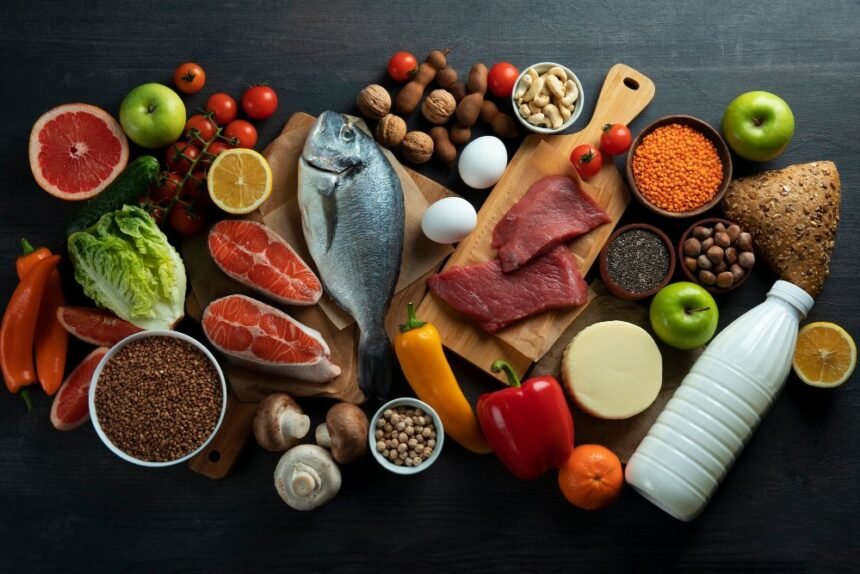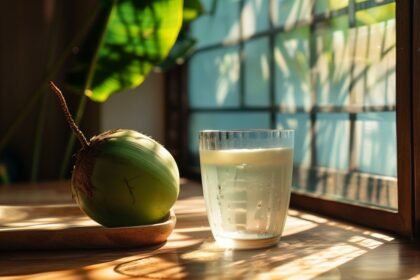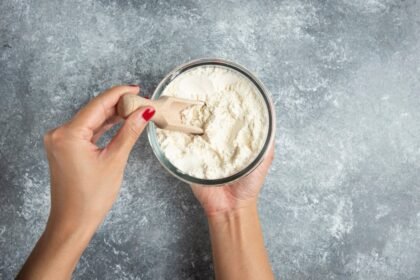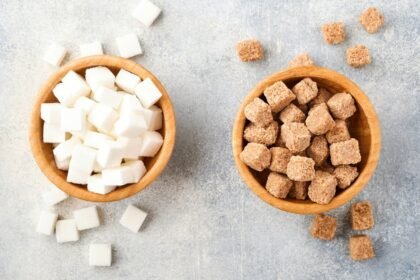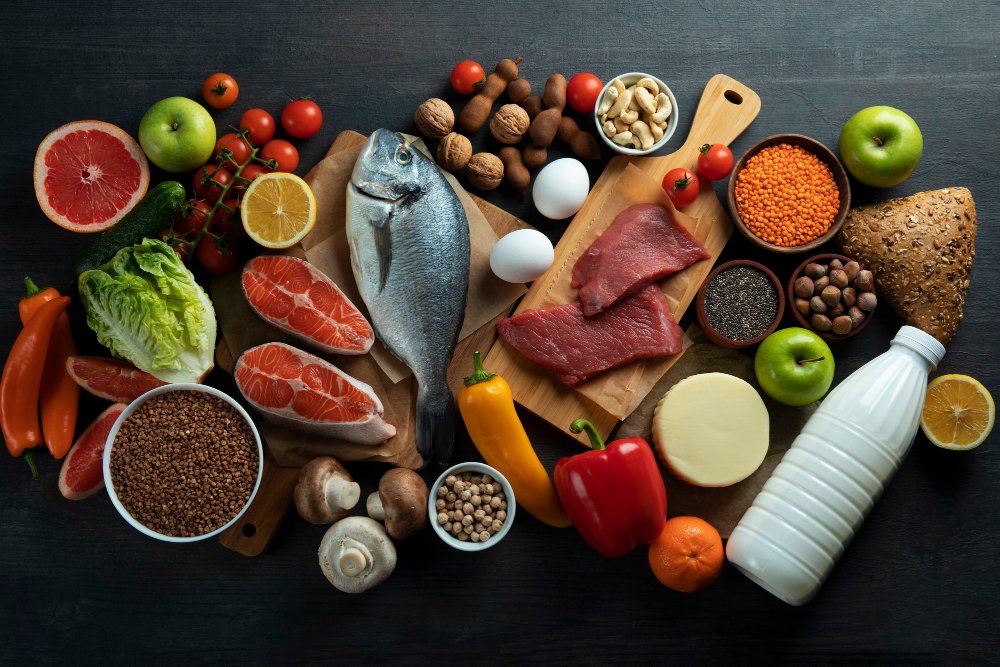 Getting enough protein in your daily diet is crucial for muscle growth, tissue repair, and overall health. Whether you follow a vegetarian lifestyle or include meat in your meals, finding quality protein sources can sometimes feel overwhelming with so many options available.
Getting enough protein in your daily diet is crucial for muscle growth, tissue repair, and overall health. Whether you follow a vegetarian lifestyle or include meat in your meals, finding quality protein sources can sometimes feel overwhelming with so many options available.
The good news? There are excellent protein-rich foods that work for everyone, regardless of dietary preferences. In this comprehensive guide, we’ll explore five outstanding protein sources that deliver both quality and versatility to your meal planning.
Make Your Own Protein Powder at Home: Healthy, Natural, and Budget-Friendly
Why Protein Matters for Your Health
Before diving into our top picks, it’s worth understanding why protein deserves a starring role on your plate. This macronutrient serves as the building blocks for muscles, bones, skin, and blood. It also helps regulate hormones, supports immune function, and keeps you feeling satisfied after meals.
Most adults need about 0.8 grams of protein per kilogram of body weight daily, though this can vary based on activity level, age, and health goals. Athletes and highly active individuals often require more to support recovery and performance.
1. Greek Yogurt – The Creamy Protein Powerhouse
Greek yogurt stands out as an exceptional protein source that works beautifully for both vegetarians and those who eat meat. With approximately 15-20 grams of protein per 6-ounce serving, it delivers twice the protein content of regular yogurt.
What makes Greek yogurt particularly valuable is its complete amino acid profile, meaning it contains all nine essential amino acids your body can’t produce on its own. The thick, creamy texture comes from the straining process that removes excess whey, concentrating both the protein and flavor.
Beyond protein, Greek yogurt provides probiotics that support digestive health, calcium for strong bones, and B vitamins for energy metabolism. Choose plain varieties to avoid added sugars, then customize with fresh berries, nuts, or a drizzle of honey.
Pro tip: Use Greek yogurt as a substitute for sour cream in recipes, or blend it into smoothies for an instant protein boost.
2. Quinoa – The Complete Plant-Based Champion
Quinoa earns its reputation as a superfood for good reason. This ancient grain provides about 8 grams of protein per cooked cup and stands unique among plant-based proteins as a complete protein source.
Originally cultivated in South America, quinoa has a mild, nutty flavor that adapts well to both sweet and savory dishes. Its versatility makes it an excellent base for grain bowls, a protein-rich addition to salads, or even a nutritious breakfast porridge.
The grain is also packed with fiber, iron, magnesium, and antioxidants. Unlike many other grains, quinoa is naturally gluten-free, making it suitable for those with celiac disease or gluten sensitivity.
Preparation is simple: rinse quinoa thoroughly before cooking to remove its natural coating, which can taste bitter. Use a 2:1 ratio of liquid to quinoa and simmer for about 15 minutes until fluffy.
Is Chai-Biscuit Healthy? Dietitian Explains Pros & Cons
3. Salmon – The Omega-3 Rich Protein Star
For those who include fish in their diet, salmon represents one of nature’s most nutritious protein sources. A 3.5-ounce serving provides approximately 25 grams of high-quality protein along with essential omega-3 fatty acids.
These healthy fats support heart health, brain function, and may help reduce inflammation throughout the body. Salmon also delivers vitamin D, B vitamins, and selenium, creating a nutritional package that’s hard to beat.
Wild-caught salmon typically contains higher levels of omega-3s compared to farm-raised varieties, though both options provide excellent protein. The fish’s rich, satisfying flavor pairs well with countless preparation methods, from simple grilling to elaborate glazes.
Cooking tip: Aim for an internal temperature of 145°F for perfectly cooked salmon that remains moist and flaky.
4. Lentils – The Fiber-Rich Plant Protein
Lentils deserve recognition as one of the most affordable and nutritious protein sources available. One cup of cooked lentils contains about 18 grams of protein, plus an impressive 15 grams of fiber.
These legumes come in various colors and sizes, from quick-cooking red lentils perfect for soups to hearty green lentils that hold their shape in salads. The high fiber content helps regulate blood sugar levels and promotes feelings of fullness, making lentils excellent for weight management.
Lentils also provide folate, iron, potassium, and magnesium. They’re particularly valuable for vegetarians and vegans as they help meet both protein and iron needs when paired with vitamin C-rich foods to enhance absorption.
Unlike many other legumes, most lentils don’t require soaking and cook relatively quickly, making them convenient for weeknight meals. Try them in curries, stews, or as a protein-rich base for veggie burgers.
Is Jaggery Better Than Sugar? Health Coach Decodes the Truth
5. Chicken Breast – The Lean Protein Classic
Chicken breast remains a go-to protein choice for its impressive protein content and versatility. A 3.5-ounce serving provides about 31 grams of protein with relatively low fat content when the skin is removed.
This lean protein source supplies all essential amino acids while being relatively low in calories, making it popular among those focused on muscle building or weight management. Chicken breast also provides niacin, selenium, and phosphorus.
The mild flavor of chicken breast makes it incredibly versatile, adapting well to cuisines from around the world. Whether grilled, baked, poached, or stir-fried, proper cooking techniques ensure juicy, flavorful results.
Success secret: Avoid overcooking by using a meat thermometer and removing chicken from heat when it reaches 165°F internal temperature.
Making It Work for Your Lifestyle
Incorporating these protein sources into your routine doesn’t require complicated meal planning. Start by choosing two or three options that appeal to your taste preferences and dietary needs, then gradually experiment with new recipes and preparation methods.
For vegetarians, focusing on combining different plant proteins throughout the day ensures you get all essential amino acids. Pairing quinoa with lentils, for example, creates a complete amino acid profile while adding variety to your meals.
Those who eat meat can benefit from including both animal and plant proteins in their diet for optimal nutrition and environmental sustainability.
The Bottom Line
Quality protein doesn’t have to come from a single source or require expensive supplements. These five options provide excellent nutrition, versatility, and satisfaction whether you’re vegetarian, omnivorous, or somewhere in between.
Remember that the best protein source is the one you’ll actually eat consistently. Experiment with different preparation methods, seasonings, and combinations to keep your meals interesting while meeting your nutritional goals.
By incorporating a variety of these protein-rich foods into your weekly meal rotation, you’ll be well on your way to supporting your health, energy levels, and overall well-being through proper nutrition.

